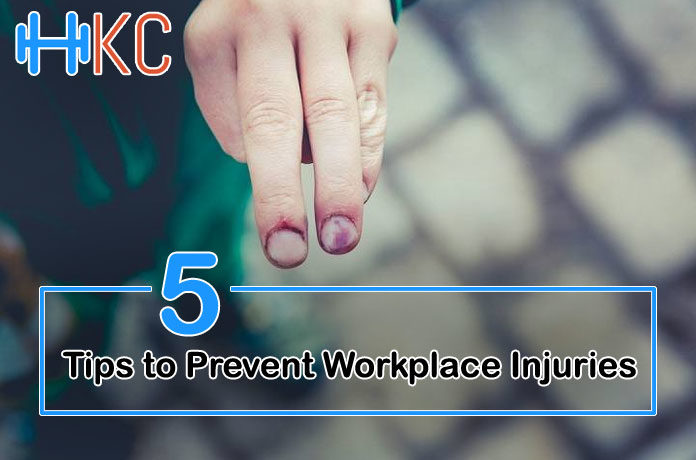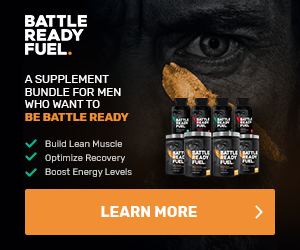5 Tips to Prevent Workplace Injuries
Millions of employees suffer workplace injuries every year. When we think of workplace safety, many have images of workers in the manufacturing, construction, or heavy industrial industries. But hazards are in any workplace, including office environments. Some of the common workplace injuries include falling from heights, being hit by falling objects, repetitive strain injury, cuts and lacerations, muscle strains, slips and trips, machine entanglement, etc. Although some injuries are unlikely in an office setting or other relatively low-risk environments, others like slips and falls, or lifting injuries are certainly possible anywhere.
The effects of workplace injuries can be quite devastating to employees and employers alike. They can cause physical injuries like loss of limbs or burns, whose effects can be permanent and life-changing. They can also lead to psychological repercussions, causing an injured employee to experience anxiety, stress, or fear of losing their job. In the worst-case scenario, some of these injuries can be fatal. On top of that, an injured employee can lose their morale, which in turn affects productivity. As an employer, you could end up spending thousands of dollars on medical bills, legal processes, rehabilitation costs, and turnover costs. It goes without saying that both employees and employers should take precautionary measures to prevent accidents at work. Here are a few tips to get you started:
Develop a Safety and Wellness Plan
Most injuries occurring at work are caused by human error, including distractions, overexertion, or carelessness. Luckily, this means that they can be avoided. The foundation of a safe working environment is an effective safety and wellness plan. Such a program includes frequent training of both new and established employees. And, since every workplace is different, there’s no one-size-fits-all when it comes to training. Occupational Safety and Health Administration (OSHA) has several education and training programs for different industries. You can modify them to develop a safety and wellness plan that’s appropriate for your work environment. Your plan should, however, cover all levels of workplace safety and health, including how to handle machines, dispose of waste, report hazardous practices or behavior, respond to emergencies, chemical handling procedures, and so on.
On top of keeping workers safe, an inclusive safety and wellness plan should be able to help them achieve all-around wellness. When employees feel mentally well, get sufficient exercise, and eat better, they are more likely to work well and recognize potential safety hazards. Despite everyone’s best efforts, workplace injuries can still happen. That’s why it’s important for employers to have adequate insurance that offers a mix of medical, life, and disability insurance coverage for their employees. This will make employees feel that their wellness is supported.
Conduct Pre-Placement Physicals
Lack of experience or the inability to physically perform given tasks is another cause of certain accidents at work. This, unfortunately, puts everyone at risk of workplace injuries and fatalities. Since most jobs require some level of physical activity, it’s important for employers to know that applicants can meet the required physical demands to safely perform the jobs they’re applying for. Depending on your industry, there are several types of pre-employment screenings that you can use to assess potential employees. Some of them include DOT physicals, Human Performance Evaluations (HPE), and Drug testing, just to mention a few. Pre-employment screening basically ensures employees are placed in the right positions that match their physical capabilities. Recruiting top talent is vital to several aspects of the company, including workplace safety. On top of the physical capabilities, employees who are conscientious, responsible, and respectful are more likely to abide by workplace safety measures and think before they act. So, look out for these qualities as well during recruitment.
Know Your Hazards
Every work environment is unique, and so are their safety concerns. For this reason, you should research safety vulnerabilities at your workplace and find ways to control or eliminate potential hazards. Depending on your work, you may be required to review your work environment, as well as practices that may lead to injuries. This includes things like workplace ergonomics, staffing levels to avoid overexertion, ventilation, and breaks, just to name a few.
Conducting such risk assessments allows you to identify hazards, determine who’s at risk, and develop strategies to reduce the risk of accidents occurring at work. Pay extra attention to common workplace injuries and take steps to eliminate them by finding the root causes and asking employees for their input. While you’re at it, it’s important to record and report all safety concerns to ensure they are managed and to provide more information that can help with future risk assessments.
Technological advancements sometimes create new safety hazards. So, keep up-to-date with new hazards and educate/train employees on how to avoid them. Be sure to monitor, re-evaluate, and update your risk assessments to maintain high levels of safety.
Provide Appropriate PPE (Personal Protective Equipment)
A risk assessment will also determine if employees need protective equipment to help protect them from workplace hazards. If need be, employers must provide task-appropriate PPE that’s suitable for each employee. This might include things like gloves, goggles, safety shoes, earplugs, hard hats, full-face masks, etc. In addition, safety equipment such as safety harnesses, pedestrian safety barriers, and appropriate signage should be available and in place, if required. However, the mere availability of these protective gears isn’t enough; comprehensive attention to their use is required as well. Employers should provide appropriate training to ensure employees understand when PPE is necessary; what PPE to use when performing a given task; how to properly wear, adjust, and take off the equipment; how to check and report faults on their PPE, any limitations; not forgetting proper care, maintenance, and disposal of the PPE. Employees must wear their protective equipment whenever it’s required, considering proper use of this equipment makes all the difference between life and death in case of an accident. PPE ranges in all different types of protective equipment, from gloves to protect whilst heavy lifting, to even bullet-proof hoodies when working in extreme environments, where safety is paramount.
If need be, employers must provide task-appropriate PPE that’s suitable for each employee. This might include things like disposable vinyl gloves, goggles, safety shoes, earplugs, hard hats, full-face masks, etc.
Monitor Safety Measures
Executing a workplace safety plan successfully is a continuous process that requires strict supervision and constant monitoring. Supervisors and managers must ensure everyone is adhering to all the safety regulations that have been put in place. As mentioned earlier, workplace injuries can affect productivity and even cost your business thousands of dollars. In that case, encourage employees to report potential hazards and consider rewarding employees who abide by the set standards or stay injury-free for a certain amount of time. After reinforcing all of the above safety measures at every given opportunity, it’s important to conduct regular safety audits to verify the effectiveness of your safety strategies. Monitoring your safety measures also allows you to evaluate them to see if they’re in compliance with OSHA’s regulations as well as company policies. While it’s possible for companies to conduct internal safety audits at the workplace it’s probably best to hire a qualified third-party auditor for an unbiased audit.
















